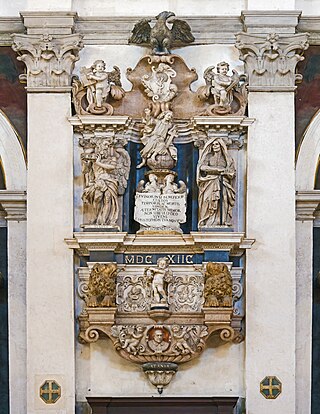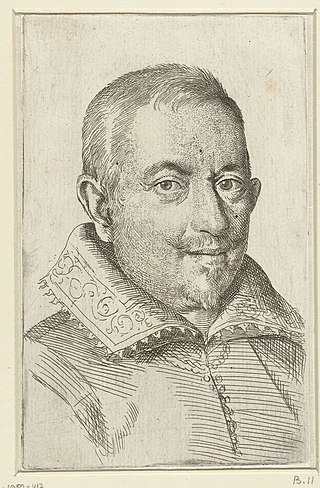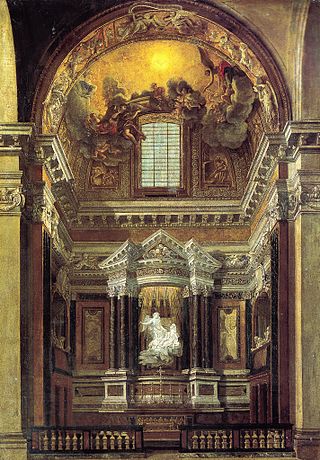Related Research Articles

Benedetto Briosco (c.1460–c.1517) was an Italian Renaissance sculptor and architect, active in Lombardy.

Giovanni Andrea Ansaldo was an Italian painter active mainly in Genoa.
Francesco Aureri was an Italian sculptor of the Renaissance period, active in Cremona.

Domenico Auria was an Italian architect and sculptor of the Renaissance period, active in Naples. He was a pupil of Marliano da Nola. He is also known as Giovanni Domenico or Giovan Domenico Auria, or Domenico d'Auria.

Giovanni di Balduccio was an Italian sculptor of the Medieval period.

Pietro Balestra was an Italian sculptor of the late-Baroque period. He was born in Siena, and was best known for his work in marble in Dresden, including a Meleager slaying the Calydonian Boar; Venus and Cupid, and Boreas and the Rape of Orithyia.

Antonio Bambocci (1351?–1421?) was an Italian painter and sculptor of the Gothic period, active in and near Naples.
Marco Bandinelli, also known as Marchino di Guido Reni, was an Italian painter of the Baroque period. He began as a model and cook for Guido Reni in Bologna.
Francesco Baratta the elder was an Italian sculptor of the Baroque period.
Giovanni Bartoli was an Italian sculptor and jewelmaker of the 14th century in Rome. In 1369, he completed for Pope Urban V, silver busts of Saints Peter and Paul for San Giovanni Laterano.
Giovanni Battista Bellandi was an Italian sculptor, active in Milan for its elaborately decorated Cathedral.

Marco Beltrame was an Italian sculptor of the Baroque period, active mainly in his birthplace, Venice.
Damiano del Barbiere was an Italian stuccoist and sculptor of the Renaissance period, recruited by Primaticcio to help in the labors at the palace of Fontainebleau.

Lodovico Bertucci was an Italian painter of the Baroque period, specializing in paintings of bambocciate and capricci. He was born in Modena.

Simone Brentana was an Italian painter of the Baroque period, active in Verona. He was born in Venice to Domenico Brentana, but became orphaned by age nine. After a prolonged desultory education in various fields including music, he trained as a painter in Venice with Pietro Negri, frequenting the Accademia di Belle Arti, moving in 1685 to Verona, where most of his paintings are located.
Francesco Brambilla was an Italian sculptor of the Renaissance period, active in Milan, in the decoration of its massive gothic Cathedral.

Guido Ubaldo Abbatini (1600–1656) was an Italian painter of the Baroque period, active mainly in Rome and Usigni.
Fra Simone da Carnuli was a (Genoese) painter. He was a Franciscan friar of Genoa. He painted several pictures for his convent, two of which are dated 1519, representing the Last Supper and Preaching of St. Anthony. He painted architectural designs and bird's-eye views with figures seen from an aerial perspective.
Stefano Ticozzi (1762-1836) was an Italian art historian.
Nicolao Civitali was an Italian Renaissance sculptor and architect, active in his native Lucca. He was the son of the sculptor Matteo. His son, Vincenzo Civitali, was also a local engineer and architect.